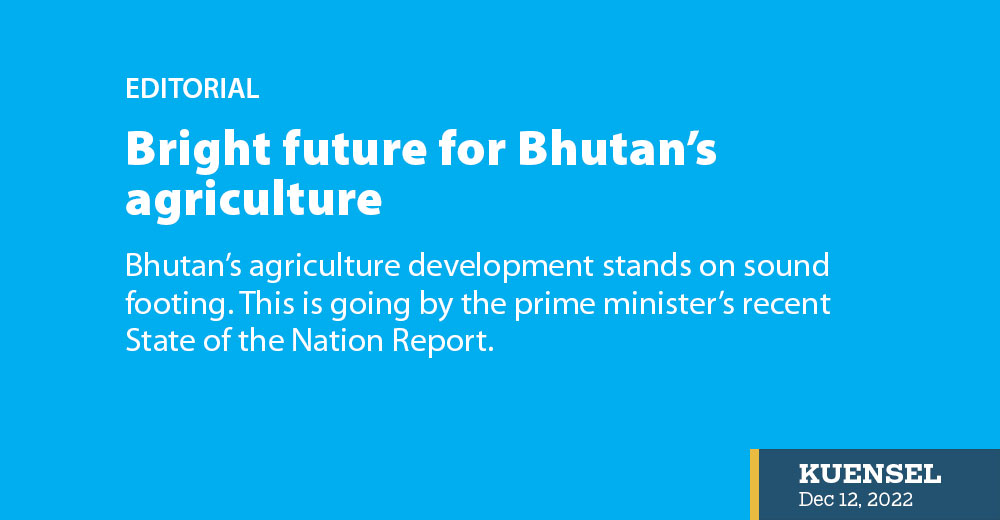Bhutan’s agriculture development stands on sound footing. This is going by the prime minister’s recent State of the Nation Report.
First, there is the need to recognise that Bhutan’s agriculture sector has arrived at a crossroads—going by the focus, do we produce enough to feed ourselves, or, are our production systems aimed at export markets?
Woefully, we are executing neither of the choices commendably.
Human-wildlife conflict is a major issue facing the farming communities in the country today. Prime minister said that, annually, farmers suffer crop loss of about 43 percent due to human-wildlife conflicts.
The prime minister said that the government has approved Nu 500 million to construct chain-link fencing across the country. “Following a successful pilot project, about 116.81 kilometres of chain link fencing worth Nu. 198.577 million will be constructed in the first phase.”
How this initiative will turn Bhutan’s agriculture sector is yet to be seen but this is a welcome development in the sector.
Prime minister said that we now have Gewog Tiger Conservation Tshogpa (GTCT) in six human-tiger conflict hotspots—gewogs of Nubi, Tangsibji, Langthel and Korphu in Trongsa, Nangkor in Zhemgang, and Chumey in Bumthang. Under the programme, 605 members and 1,149 livestock have been insured.
Similarly, to mitigate crop damage by elephants in the south of the country conflict, 27.5 kilometres of electric fence, animal intrusion detection, repellent system, and portable solar corral have been installed in Sarpang.
Also, a response team has been instituted and a human-wildlife conflict management implementation framework developed to implement human-wildlife practices effectively.
Agriculture development seems to be really picking pace. Despite various plans and programmes, however, the overall production rate seems to be decreasing.
When talking about agriculture and production, we might do well to do away with useless demagoguery. If there is a rise in productivity but a fall in production, Bhutan’s agriculture is in muddy waters.
If agriculture is affected by factors such as human-wildlife conflict, water shortage, rural-urban migration, labour shortage, land fragmentation and climate change, among others, there is a need for a cross-sectoral approach to solving the problem.
If the government so far focused only on increasing agricultural production and omitted marketing accessibility and strategy for the farmers, a change and workable solution have been long time coming.
But development worth celebrating is that farmers of Wangdue, Punakha, and Gasa now have access to cold storage facility constructed by the Food Corporation of Bhutan, which began operations in November. Similarly, farmers of Sarpang, Tsirang, and Zhemgang have access to the same facility in Sarpang. The facility can store up to 300 tonnes of agricultural and livestock products.
Attempts are being made to address these issues, including compensation to the farmers for crop loss to wild animals. Even conservation laws are being studied and changes proposed.
Agriculture development needs a new turn—we must produce and add value to the products. Agriculture is our strength and we must take advantage of the sector. It must begin with investment.


